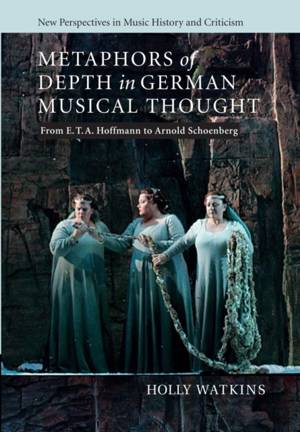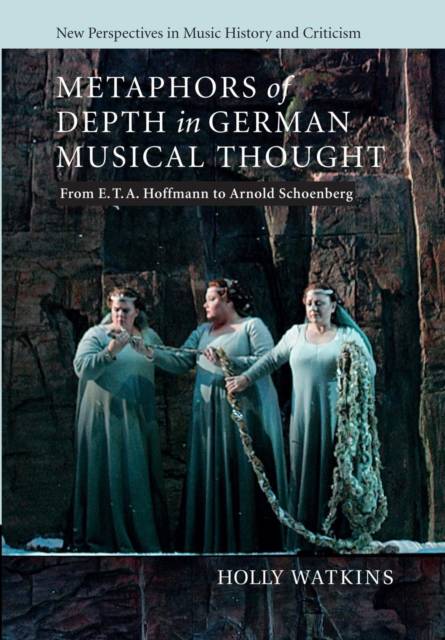
- Afhalen na 1 uur in een winkel met voorraad
- Gratis thuislevering in België vanaf € 30
- Ruim aanbod met 7 miljoen producten
- Afhalen na 1 uur in een winkel met voorraad
- Gratis thuislevering in België vanaf € 30
- Ruim aanbod met 7 miljoen producten
Zoeken
Metaphors of Depth in German Musical Thought
From E. T. A. Hoffmann to Arnold Schoenberg
Holly Watkins
€ 61,95
+ 123 punten
Uitvoering
Omschrijving
What does it mean to say that music is deeply moving? Or that music's aesthetic value derives from its deep structure? This study traces the widely employed trope of musical depth to its origins in German-language music criticism and analysis. From the Romantic aesthetics of E. T. A. Hoffmann to the modernist theories of Arnold Schoenberg, metaphors of depth attest to the cross-pollination of music with discourses ranging from theology, geology and poetics to psychology, philosophy and economics. The book demonstrates that the persistence of depth metaphors in musicology and music theory today is an outgrowth of their essential role in articulating and transmitting Germanic cultural values. While musical depth metaphors have historically served to communicate German nationalist sentiments, Watkins shows that an appreciation for the broad connotations of those metaphors opens up exciting new avenues for interpretation.
Specificaties
Betrokkenen
- Auteur(s):
- Uitgeverij:
Inhoud
- Aantal bladzijden:
- 350
- Taal:
- Engels
- Reeks:
- Reeksnummer:
- nr. 21
Eigenschappen
- Productcode (EAN):
- 9781107460980
- Verschijningsdatum:
- 30/10/2014
- Uitvoering:
- Paperback
- Formaat:
- Trade paperback (VS)
- Afmetingen:
- 170 mm x 244 mm
- Gewicht:
- 557 g

Alleen bij Standaard Boekhandel
+ 123 punten op je klantenkaart van Standaard Boekhandel
Beoordelingen
We publiceren alleen reviews die voldoen aan de voorwaarden voor reviews. Bekijk onze voorwaarden voor reviews.











